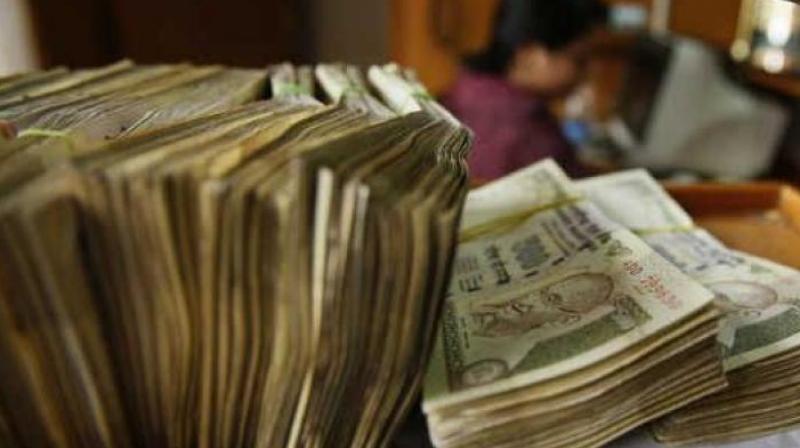Note ban economic quackery by Centre?

When Prime Minister Narendra Modi made the grand statement on November 8 that Rs 500 and Rs 1000 currency notes ceased to be legal tender at the stroke of midnight, he sounded a little too confident that he had hit the bull’s eye, and at last recovered a bit of his lost political shine. But last Sunday, he resorted to tearful rhetoric saying he was willing to lose his life in the war against black money. For the first time, he tried to include Maoists and terrorists in the case against black money, while on November 8 he could see nothing but terrorism, that too of the Pakistan-backed Islamic variety. He didn’t anticipate the huge anger of ordinary citizens, and didn’t realise he would facilitate a rapprochement between Mamata Banerjee’s Trinamul Congress and its sworn rival, the CPI(M), with the West Bengal CM calling up CPI(M) general secretary Sitaram Yechury to forge a common front against the BJP amid the discontent on the streets that the demonetisation had created. Mr Modi thought he had outflanked the Opposition with the perfect political gambit. But what he’s really done is to have united the dispersed Opposition as the Winter Session of Parliament begins Wednesday.
This attempt, not a very sophisticated one, to eliminate black money, specially in financing terror, reflects the rather simplistic assumptions of the BJP leaders, including Mr Modi and finance minister Arun Jaitley. It is primitive thinking on a rather complicated economic phenomenon. Honest middle class people nurse a deep rage against all those who make money in devious ways and flaunt their wealth and thumb their noses at honest citizens who work hard and barely manage to lead a dignified life. The BJP and Mr Modi, and other populist agitators including Anna Hazare, Arvind Kejriwal and Baba Ramdev, have tapped this deep vein of anger in the hearts and minds of ordinary people quite successfully, and climbed the political ladder on its basis. To be fair to Mr Modi, he didn’t harp on black money in the 2014 Lok Sabha campaign. In fact, he made the observation that there is a need to remove the conditions that allows the generation of black money. He had voiced hopes of revving up the economy.
Two years down the line, he seems to have fallen back on the emotive issue of black money. That’s why he stepped up to make a grand statement on the threat black money poses to national security, more than anything else. Mr Modi is no political novice, and he’s doing his best to help the BJP campaign in the Assembly polls in Uttar Pradesh, where the party lacks a recognisable CM candidate. It is mainly politics. It needs a clear mind to grasp reasons for the rise of black money, and how to root it out. Rage is a smokescreen and it seems those who flaunt their anger are rarely asked about the right diagnosis, the right prescription and about the effectiveness of the cure. That’s why the black money issue remains a politically emotive one, and lends itself to rhetorical fervour. The facts indicate earlier demonetisation exercises were quite ineffectual.
Referring to the 1946 demonetisation, the 1971 Direct Taxes Enquiry Committee had observed: “Demonetisation was not successful then because only a very small proportion of the total notes in circulation was demonetised. Notes demonetised in 1946 were of the value of Rs 143.97 crores, against total notes issued worth Rs 1,235, 93 crores.” It was estimated in 1981 that the Rs 1,000, Rs 5,000 and Rs 10,000 notes demonetised in January 1978 totalled Rs 146 crores, and what was tendered to the Reserve Bank was Rs 125 crores. Citing these cases, the Encyclopaedia of Indian Economy (P.N. Singh, J.K. Singh, Kumar Ratnesh; Deep and Deep Publications; 2008) entry on black money says: “Demonetisation assumes all black money incomes are held in the form of cash balances, but the fact is... it is only a small part of the total black money incomes which is held in liquid form.”
Mr Jaitley indicated the demonetisation is a step towards moving towards a cashless economy. It is bad logic at the best of times. The link between the two is tenuous, to say the least. To push more people to use plastic money, there is a need for more people to have bank accounts and to be given debit cards. But the number of bank account holders in India seem to hover around 400 million, of which 196 million are zero-balance accounts, according to a World Bank report. The fundamental problem with money circulation of whatever denomination, small or big, has to do with prices and inflation. Excess money in circulation is a factor of inflation, and pulling notes out of circulation is a measure to control it. If the Narendra Modi government has got confused about the real uses of demonetisation, it only means its eyes are firmly fixed on its political uses. It seems that Mr Modi had succeeded in scoring political brownie points as the naïve middle class is star-struck by his “surgical strike” on black money.
HDFC’s Deepak Parekh went into eulogy-overdrive when he called the November 8 decision the most important achievement after Independence in 1947 and the 1991 economic reforms. You know when exaggeration gets too unrealistic the subject of such high praise is of doubtful value. Demonetisation is a regular bureaucratic measure and it should remain so. Mr Modi must be aware that he has lost whatever advantage he had gained in the first four hours after his grandiose television statement. The Modi government has only indulged in economic quackery, and it was caught red-handed rather quickly.

